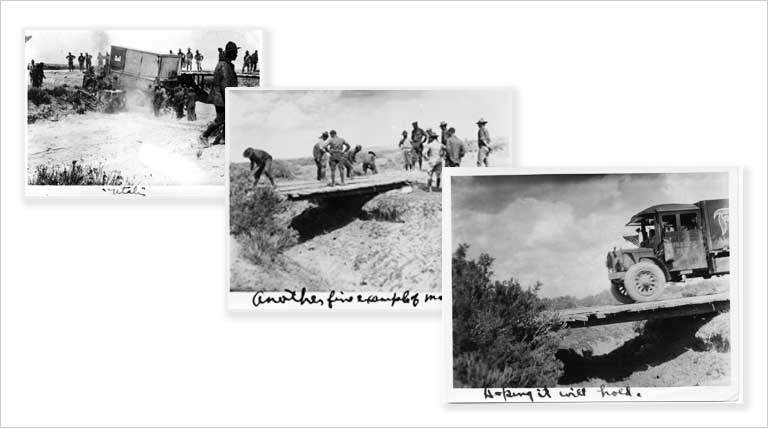Turn Small Wins into Big Improvements
How to identify, prioritize, and tackle projects with the biggest impact
- If you only focus on what’s urgent, you may never get to what’s important.
- Overcoming smaller challenges teaches teams how to overcome differences and work together toward a solution.
- Using paper to roll out changes to your team won’t show you how well they understand or if they’re following it.

Our already packed project lists seem to get bigger and bigger every week. At times it can be hard just to put out all the fires, much less make progress on what’s strategically important. If you’re looking for a way to focus on the things that will really have an impact, consider following some advice from one of our most productive presidents.
After serving a distinguished career in the US military, ultimately leading Allied forces to victory in World War II, Dwight D. Eisenhower was elected the 34th President of the United States. During his two terms in office, he led the country through 8 years of challenging events both domestically and internationally.1
Here are just some of the major issues he faced during his presidency2:
First Term
- The ending of the Korean War
- Overthrow of the Iranian government
- Soviets test the H-bomb
- McCarthyism and the red scare
- Brown v. Board of Education is decided
- Federal Highway Act becomes law
- A Polio vaccine becomes available
- Israel, Britain, and France attack Egypt
Second Term
- The Eisenhower doctrine is adopted
- Cigarettes confirmed to cause cancer
- Civil rights acts passed
- Russia launches Sputnik
- Alaska and Hawaii become states
- Steelworkers and dockworkers strike
- CIA prepares to invade Cuba
- Soviets shoot down U-2 spy plane
The point is Eisenhower had a lot on his plate. He needed to prioritize what he would tackle to get the best results. He did this with a couple of ingenious techniques – the Eisenhower principle and small wins.
The Eisenhower Principle3
You can’t do everything all at once. So how do you prioritize among a list of big hairy problems?
During a 1954 speech, Eisenhower said4:
“I have two kinds of problems, the urgent and the important. The urgent are not important, and the important are never urgent.”
Basically, if you only focus on what’s urgent, you may never get to what’s important. Later dubbed the Eisenhower Principle, it’s a practical prioritization strategy. It’s particularly helpful if you have a long to-do list and a short amount of time. Here’s another way to think about it:

- Urgent and Important – do this immediately
- Important but not urgent – set a date to do it later
- Urgent but not important – delegate to someone else
- Not important, not urgent – throw it off the list
Once you’ve prioritized your list, the next step is figuring out how to tackle each goal. Here’s where the second Eisenhower strategy comes in.
In pursuit of small wins5

Eisenhower knew a lot about leadership. Importantly, great leaders don’t just command. They build consensus, tackle problems one step at a time, and give their team credit for the success.
He did this by encouraging debate among his team. He’d then seek common ground by helping identify points of agreement on smaller issues. In this way – even if the team didn’t agree on the larger things – they would incrementally make progress toward a solution.
Along the way, he would praise people for the ideas they contributed to the short-term wins. He’d use that momentum to catapult into the next wave of small wins.
By overcoming smaller challenges, teams learn how to overcome differences and work together toward a solution. This encourages further cooperation and ultimately a solution to the bigger problem.
All that probably sounds great, but once you’ve figured out a solution, how do you implement it?
It’s unclear what tools Eisenhower used to put his plans into action, but given that it was the 1950s it probably involved a lot of paper binders and meetings. Good thing we have software now!
Reaction Plans in your team’s hands
Once you’ve prioritized the key issues and determined the changes you need to make, next you need to roll out the changes to your frontline teams. You also need to make sure they follow the plan.
Your ability to get your teams to follow your reaction plan will determine your ability to fix the problem. If you deploy to your teams using paper, you’ll never know how well they understand or if they’re following the plan. If you only deploy using training, you might fix the problem this time, but may be left unprepared when it happens again.

Here are a few examples of how we’ve put reaction plans to work using Acadia:
- One of our clients wasn’t hitting their targets for error rate improvement. They determined a large number of the errors were being disproportionately caused by the same small group of employees.
The team put their most frequently asked questions in Acadia where answers were easy for every employee to find. Then they required their lowest performers to review and acknowledge the documents. In just a few months, the company saw a significant baseline improvement in their error rate. They continue to use the same process today when error rates increase.
- A few months after an engineer left his role at a client’s warehouse, the robot he installed started to malfunction. The engineer had left behind a troubleshooting guide, but nobody knew where to find it.
The robot stayed offline until the guide was tracked down. After troubleshooting the problem, and getting the robot back online, the team quickly added the guide to Acadia. They also sent out an acknowledgement, so everyone knew where to find the reaction plan in the future. It hasn’t been a problem since.
- In a manufacturing facility operating a new filling machine, the team was struggling to troubleshoot errors while maintaining production goals. The machine was purchased for its capacity to run at 1,750 cans per minute but was averaging only 350.
By identifying common error codes and providing step-by-step reaction plans in Acadia, they could quickly address issues and eliminate long periods of unplanned downtime.
In these scenarios and hundreds of others like them, our clients solve problems quickly by making solutions accessible and holding employees accountable. We’d like to show you how it works. Reach out and share the details of one of your short-term projects. We’ll help you come up with a plan of attack.
Sources:
Ready to crush your goals?
"*" indicates required fields


